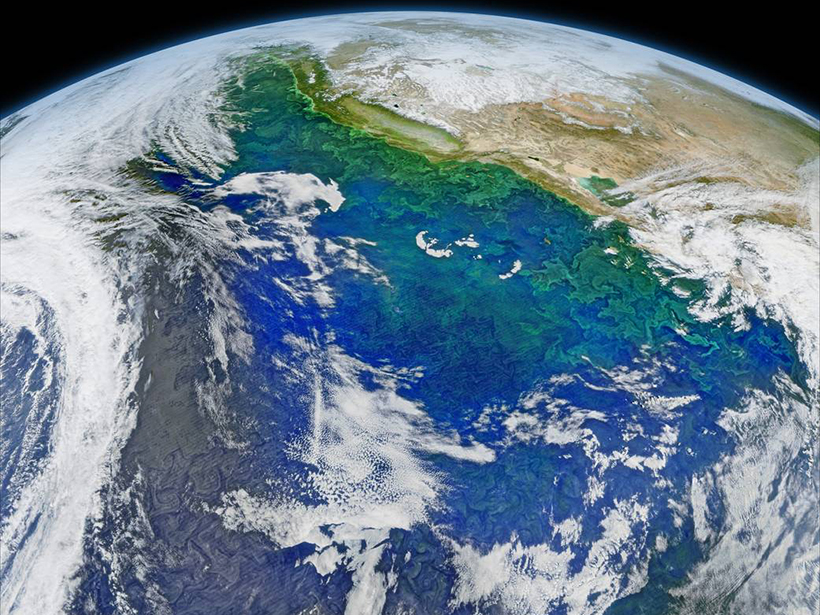Source: Journal of Geophysical Research: Oceans
Over time, the overall climate in the tropical Pacific Ocean cycles between warm and cool temperatures. This cyclical pattern, which fluctuates year to year or sometimes gradually over a few years, is called the El Niño–Southern Oscillation, or ENSO. Individually, cooler ENSO years are called La Niña (“little girl” in Spanish), and warmer ENSO years are called El Niño (“little boy”). As ENSO shifts from La Niña to El Niño and vice versa, it often triggers meteorological disruptions throughout the rest of the world, such as intense rainfall, strong winds, and extreme temperatures.
The eastern North Pacific has a major ocean current running through it called the California Current. Flowing southward down the west coast of North America, the surface-level current is fairly slow—it travels a mere 25 centimeters per second—but at any given time it is transporting roughly 1.1 million cubic meters of water per second. And, regardless of whether it’s a La Niña or El Niño year, the current may warm or cool from year to year.
In a new study, Fiedler and Mantua show that remote (ENSO) and local atmospheric forcings of the California Current System are only modestly correlated with each other. First, they updated existing records of warm and cool years in the California Current System to create a 66-year data record beginning in 1950. They found that about half of the warm or cool events in California or tropical waters occur without a corresponding event in the other location. Then, they examined sea level pressure data and disruptions in surface-level wind in order to understand the atmospheric processes driving both ENSO’s and the California Current System’s warm and cold events.
Using a model they developed, the team found that surface temperature changes throughout most of the California Current System were associated with regional winds from the northeast Pacific that affect the air-sea exchange of heat and motion, whereas those in the southernmost part of the current were associated with forcing from remote tropical winds.
Overall, the researchers found that both warm and cool events in the California Current System are more intense when there is an ENSO event (a La Niña or El Niño) happening at the same time.
Between the Warm Blob, the Pineapple Express, and a long-standing period of drought, the West Coast hasn’t seen many “normal” weather years as of late. This study helps shed some light on the region’s seemingly fathomless weather patterns by explaining the underlying mechanisms of two major climate phenomena. (Journal of Geophysical Research: Oceans, https://doi.org/10.1002/2017JC013094, 2017)
—Sarah Witman, Freelance Writer
Citation:
Witman, S. (2017), Powerful Pacific forces disrupt the California Current, Eos, 98, https://doi.org/10.1029/2017EO079275. Published on 11 August 2017.
Text © 2017. The authors. CC BY-NC-ND 3.0
Except where otherwise noted, images are subject to copyright. Any reuse without express permission from the copyright owner is prohibited.

